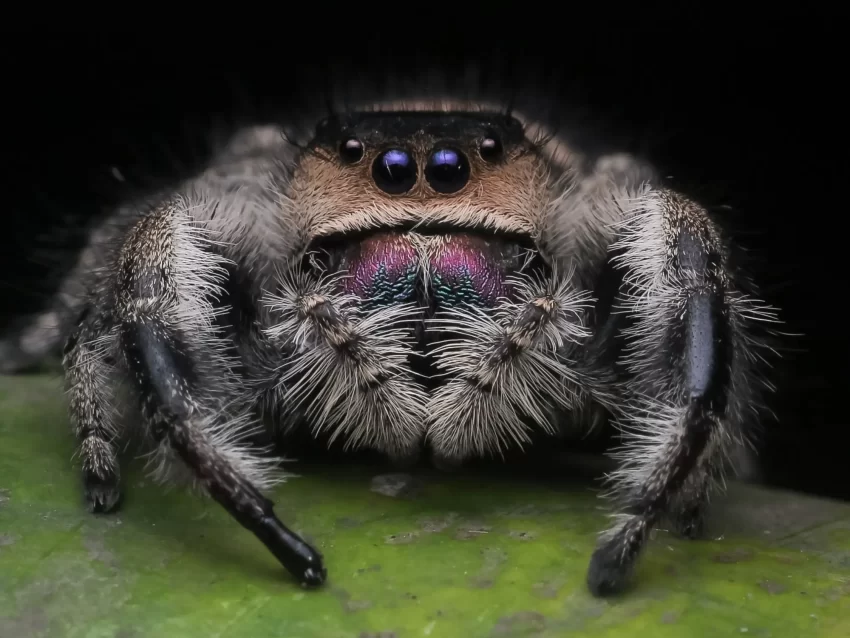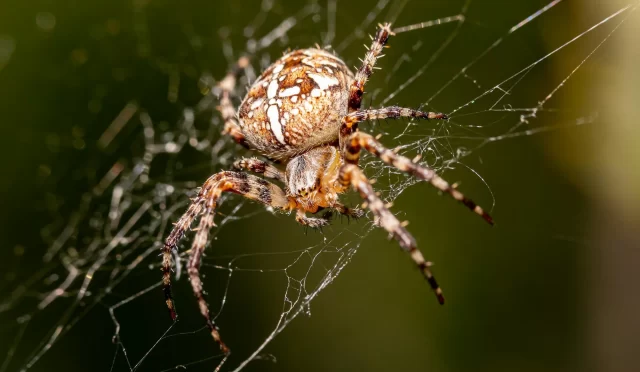Meet The Phidippus Regius, also known as the Regal Jumper spider, is a fascinating arachnid species that captivates with its unique characteristics. This spider, with its agile movements and striking appearance, stands out in the world of arachnids. Let’s dive into the intriguing world of the Regal Jumper and uncover what makes it so special.
Physical Characteristics
When it comes to the physical characteristics of the Phidippus Regius, there are several distinct features that set this arachnid apart. One of the most striking aspects is its size, with adult Regal Jumpers typically measuring between 0.5 to 1 inch in length. Despite its small stature, this spider possesses remarkable agility and speed, making it a formidable predator in its environment.
The coloration of the Phidippus Regius is another noteworthy trait. These spiders showcase a vibrant combination of black, white, and metallic green hues, creating a visually striking appearance. The intricate markings on their bodies serve a dual purpose – not only do they enhance the spider’s camouflage abilities, allowing it to blend seamlessly into its surroundings, but they also play a role in attracting potential mates during the breeding season. Furthermore, the Phidippus Regius boasts impressive jumping capabilities, earning it the moniker “Regal Jumper.” This species is known for its remarkable leaping prowess, which it utilizes both for hunting prey and evading predators. By swiftly propelling itself through the air with precision and accuracy, the Regal Jumper demonstrates its agility and quick reflexes in capturing its next meal.
Is Phidippus Regius Venomous?
Phidippus Regius is venomous, like all spiders. However, its venom is not considered harmful to humans. Phidippus regius, use their venom to immobilize prey such as insects. They are not aggressive towards humans and will typically only bite if they feel threatened or cornered, and even then, their bites are generally harmless and cause only mild irritation or swelling, similar to a bee sting.
As with any spider bite, if you are bitten by a Phidippus regius or any other spider and experience severe symptoms or have concerns about the bite, it is advisable to seek medical attention.
Behavioral Patterns
The Phidippus Regius, also known as the Regal Jumper spider, exhibits fascinating behavioral patterns that set it apart in the arachnid world. From its agile hunting techniques to intricate mating rituals, this species showcases a diverse range of behaviors that contribute to its survival and reproduction.
One of the most remarkable aspects of the Regal Jumper spider’s behavior is its hunting strategy. Using its keen eyesight and lightning-fast reflexes, this spider is a skilled predator that relies on ambush tactics to catch its prey. With the ability to leap several times its body length, the Phidippus Regius can swiftly capture insects in mid-air, showcasing its remarkable agility and precision.
Moreover, the mating rituals of the Regal Jumper spider are a sight to behold. During courtship, male Phidippus Regius spiders perform intricate dances and vibrations to attract females, showcasing their strength and vitality. The successful mating of these spiders is crucial for ensuring the continuation of their species, highlighting the importance of these behavioral displays. When it comes to interactions within their own species, the Regal Jumper spider displays complex social behaviors. From territorial disputes to communication through vibrations and pheromones, these spiders have evolved sophisticated ways to navigate their social hierarchy and ensure reproductive success. Understanding these behavioral patterns provides valuable insights into the intricate world of arachnid interactions.
Habitat and Distribution
The Phidippus Regius has a preferred habitat that plays a crucial role in its survival and behavior. These fascinating arachnids can be found in a variety of environments, ranging from grasslands and forests to urban areas. Their adaptability allows them to thrive in diverse conditions, making them a versatile species in the arachnid world.
When it comes to distribution, the Regal Jumper spider can be found across North America, particularly in the southeastern United States. They are known to inhabit states like Florida, Georgia, and South Carolina, where the warm climate and abundant vegetation provide an ideal setting for their lifestyle. Additionally, these spiders have been observed in other regions with similar environmental characteristics, showcasing their ability to adapt to different locations.
In their natural habitat, Phidippus Regius spiders can be seen inhabiting vegetation such as shrubs, bushes, and trees. They use their exceptional jumping abilities to navigate through these plants, hunting for prey and avoiding predators. Their agile nature and camouflage skills make them well-suited for blending into their surroundings, ensuring their survival in the wild.
Overall, the habitat and distribution of the Regal Jumper spider highlight the species’ resilience and adaptability in various ecosystems. By understanding where these spiders thrive and how they interact with their environment, we can appreciate the important role they play in maintaining the balance of their habitats.
Ecological Importance
Understanding the of the Phidippus Regius, or the Regal Jumper spider, reveals its significant role within the ecosystem. These agile arachnids contribute to pest control by preying on insects, helping to regulate populations that could otherwise become problematic. Moreover, the Regal Jumper spider plays a crucial part in biodiversity by occupying a specific niche in the food chain. By controlling insect populations, they prevent certain species from dominating the ecosystem, allowing for a more diverse range of flora and fauna to thrive. This diversity is essential for a healthy and sustainable ecosystem, as it ensures that no single species becomes overly dominant.
In essence, the ecological importance of the Regal Jumper spider extends beyond its physical presence. It serves as a guardian of balance, ensuring that the ecosystem remains diverse and thriving. By playing a vital role in pest control and biodiversity, these spiders demonstrate the intricate web of connections that exist within nature, highlighting the importance of every species, no matter how small.






